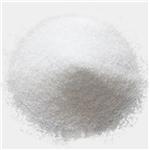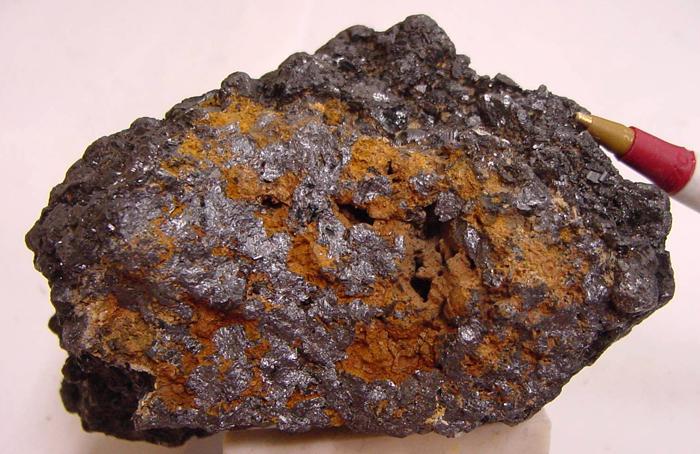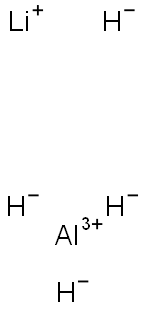What is Lithium Aluminum Hydride?
Dec 13,2021
Basic Informations
Lithium aluminum hydride is a white to gray powder. A combustible solid. monoclinic crystals; grey in the presence of aluminum impurity; stable below 120°C in dry air; turns grey on standing; hygroscopic; density 0.917 g/cm3; melts at 190°C (decomposes); reacts with water and alcohols; soluble in diethylether and tetrahydrofuran (about 30 and 13 g/100g, respectively at 25°C; also soluble in dimethylcellosolve; sparingly soluble in dibutylether; slightly soluble in dioxane (1g/L) and practically insoluble in hydrocarbons; can be solubilized in benzene by crown ether.
Lithium aluminum hydride is used as a powerful reducing agent inorganic synthesis. Except for olefinic doublebonds, almost all organic functional groupsare reduced by lithium aluminum hydride(Sullivan and Wade 1980). It is used extensivelyin pharmaceutical synthesis and in catalytichydrogenation.
Structure
LAH crystallizes in the monoclinic space group P21/c. The unit cell has the dimensions: a = 4.82, b = 7.81, and c = 7.92 Å, α = γ = 90° and β = 112°. In the structure, Li+ centers are surrounded by five AlH4− tetrahedra. The Li+ centers are bonded to one hydrogen atom from each of the surrounding tetrahedra creating a bipyramid arrangement. At high pressures (>2.2 GPa) a phase transition may occur to give β-LAH.

Stability
Stable in dry air at room temperature. It decomposes above 125' forming Al, H2, and lithium hydride. Very powerful reducer. Can ignite if pulverized even in a dry box. Reacts violently with air, acids, alcohols, benzoyl peroxide, boron trifluoride etherate, (2 chloromethyl furan + ethyl acetate), diethylene glycol dimethyl ether, diethyl ether, 1,2-dimethoxyethane, dimethyl ether, methyl ethyl ether, (nitriles + H2O), perfluorosuccinamide, (perfluorosuccinamide + H20), tetrahydrofuran, water. To fight fire, use dry chemical, includmg special formulations of dry chemicals as recommended by the supplier of the lithium aluminum hydride. Do not use water, fog, spray, or mist. Incompatible with bis (2-methoxyethyl)ether, CO2, BF3, diethyl etherate, dibenzoyl peroxide, 3,5 dbromocyclopentene, 172-dimethoxy ethane, ethyl acetate, fluoro amides, pyridine, tetrahydrofuran. Used as a reducing agent in the preparation of pharmaceuticals.
Uses
Lithium aluminum hydride (LiAlH4) is an effective reducing agent that can be used in chemical synthesis to reduce esters, carboxylic acids, acyl chlorides, aldehydes, epoxides, and ketones into the corresponding alcohols. In addition, amide, nitro, nitrile, imine, oxime, and azide compounds are converted into amines.
LiAlH4 is a promising substance for hydrogen storage applications. Its properties include high gravimetric and volumetric hydrogen densities . It can also be used as a reducing agent in the preparation of reduced graphene oxide (rGO).
Lithium aluminum hydride is among the most important industrial reducingagents. It is used extensively in organic syntheses and also in catalytichydrogenation. Reactant or reagent for:
1. The preparation of thermoplastic polyester polyamides from oleic acid
2. Lithium-polymer batteries
3. Hydrodefluorination of gem-difluoromethylene derivatives
4. Asymmetric aldol reactions
5. Synthesis of Li-Al-N-H composites with hydrogen absorption / desorption properties
6. LAH is a powerful reducing agent for many different reduction reactions such as that of ketones to alcohols
Preparation
LiAlH4 was first prepared from the reaction between lithium hydride (LiH) and aluminium chloride:
4 LiH + AlCl3 → LiAlH4 + 3 LiCl
In addition to this method, the industrial synthesis entails the initial preparation of sodium aluminium hydride from the elements under high pressure and temperature:
Na + Al + 2 H2 → NaAlH4
LiAlH4 is then prepared by a salt metathesis reaction according to:
NaAlH4 + LiCl → LiAlH4 + NaCl
which proceeds in a high yield. LiCl is removed by filtration from an ethereal solution of LAH, with subsequent precipitation of LiAlH4 to yield a product containing around 1% w/w LiCl.
An alternative preparation starts from LiH, and metallic Al instead of AlCl3. Catalyzed by a small quantity of TiCl3 (0.2%), the reaction proceeds well using dimethylether as solvent. This method avoids the cogeneration of salt.
Health Hazard
Lithium aluminum hydride is highly corrosive to the skin, eyes, and mucous membranes. Contact with moisture forms lithium hydroxide, which can cause severe burns. Powdered LAH forms dusts that can pose an inhalation hazard. Ingestion of this substance may cause aching muscles, nausea, vomiting, dizziness, and unconsciousness and may be fatal. Ingestion can result in gas embolism due to the formation of hydrogen.
No chronic effects of lithium aluminum hydride have been identified.
- Related articles
- Related Qustion
- Lithium Aluminum Hydride: Lithium Storage Mechanism and its Synthesis Procedure Nov 5, 2024
Lithium Aluminum Hydride's diverse applications span battery technology, showcasing complex synthesis, storage mechanisms, and the quest for enhanced performance.
- Lithium Tetrahydridoaluminate:A powerful nucleophilic reducing agent Oct 21, 2023
Lithium aluminum hydride is a powerful nucleophilic reducing agent. It reduces almost all functional groups, although isolated double and triple bonds in alkenes and alkynes are generally not attacked.
- Uses of Lithium aluminium hydride in organic chemistry Jan 27, 2022
Lithium aluminium hydride (LiAl H4), commonly abbreviated to LAH, is a powerful reducing agent used in organic chemistry.
Gadolinium oxide (gadolinium oxide), the chemical formula is Gd?O? Taking monazite or mixed rare earth ore as raw material, samarium gadolinium mixed rare earth solution is prepared through purificati....
Dec 13,2021Rare Earth Metals OxidesRutile is one of the major minerals containing titanium. It is tetragonal and often has intact tetra-columnar or needle crystalline-like structure. Its aggregate exhibits granular or compacting blocky shape.....
Dec 13,2021Inorganic saltsLithium Aluminum Hydride
16853-85-3You may like
Lithium Aluminum Hydride manufacturers
- Lithium Aluminum Hydride
-

- $10.00 / 1kg
- 2025-12-11
- CAS:16853-85-3
- Min. Order: 1kg
- Purity: 99%
- Supply Ability: 1000kg
- Lithium Aluminum Hydride
-

- $30.00 / 1kg
- 2025-09-26
- CAS:16853-85-3
- Min. Order: 1kg
- Purity: 99%
- Supply Ability: 20Tons
- Lithium Aluminum Hydride
-

- $50.00 / 1KG
- 2025-09-25
- CAS:16853-85-3
- Min. Order: 1KG
- Purity: 99%
- Supply Ability: g-kg-tons, free sample is available





